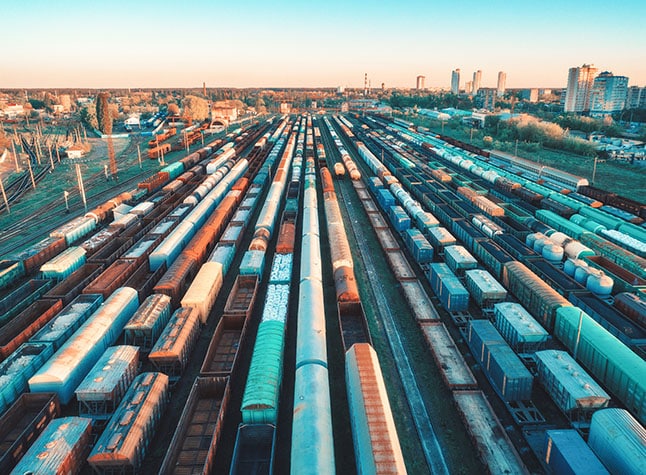But in the real world, errors can happen and not everyone likes what they bought when they actually have it in their hands. From human errors in picking orders to wrong shipping labels applied to boxes, even the best logistics plans can face uncertainty. And, with so many companies offering free returns and shoppers comfortable returning goods simply on buyer’s remorse, a perfectly processed shipment can still result in returned goods.
That’s where reverse logistics services come in: returning items from the customer to the seller with the goal of managing final disposition. As customers demand more flexibility, it’s now more important than ever to consider how reverse logistics fit into your overall merchandising strategy.
What is Reverse Logistics?

The term “reverse logistics” was first coined in a 1992 whitepaper by the Council of Logistics Management (now the Council of Supply Chain Management Professionals). The author revisited the topic in a 2002 article published in Harvard Business Review, writing: “There are many reasons for this trend—the rise of electronic retailing, the increase in catalog purchases, more self-service in stores, lower tolerance among buyers for imperfection—but few companies are doing the best job of dealing with it.”

The article went on to note that reverse logistics could actually be an opportunity for a positive customer experience and returned merchandise could become a profit center. In short: Every business that ships goods directly to the customer needs a reverse logistics plan.
It’s Not Just Logistics in Reverse
Gone are the days of the “appeal process” when returns required careful consideration by a live human and a formal authorization, including an exchange of documents. Technology has simplified and accelerated the entire process. In fact, some retailers include a return shipping label with the merchandise for “no questions asked” reverse logistics that inspires repeat business.
This can avoid excessive shipping costs, assuring that the lowest cost transportation is used. In addition, eliminating bureaucratic steps reduces the manpower costs. Much less effort should go into getting the merchandise back than getting it out to the customer in the first place.
And, there are more savings to be had once the goods are back in your hands. Yet, despite the advances in providing a much more customer-focused approach, some companies are still doing reverse logistics the old-fashioned way – and quietly losing money as a result.
The Benefits Re-Focusing the Reverse Logistics Strategy
Today’s reverse logistics doesn’t require a staff of hundreds of people processing returns to determine their final disposition. Instead, a re-engineering of reverse logistics services can save a company time, manpower and shipping costs.
By utilizing a technology-enabled approach to reverse logistics, the returns process starts with an automated form leading the goods down a guided path that effectively pre-sorts items before they are inspected for disposition. Through this pre-screening process, companies can significantly save on shipping costs and realize maximum value from returned goods.
Once the technology determines where the item is destined, a return merchandise authorization form and shipping label with the most cost-effective means possible is automatically produced. This sends the item to the appropriate return center, where a quick inspection can confirm the item condition and bundle it with other items on an LTL load. Utilizing technology, the company reduces the number of trucks required for shipping, resulting in actualized savings.
A process that once involved several steps becomes a streamlined solution. Technology-enabled management of the reverse logistics intake process frees your workforce to focus on value-driven tasks, giving you optimal productivity.
The Downside of an Advanced Strategy
Of course, there are still challenges in an automated reverse logistics strategy. While technology is a great customer service enabler, downsides can emerge as well. Chief among them is fraud mitigation.
For example, there’s the case of the 22-year-old Spanish citizen arrested in 2019. Instead of returning items, the scam artist weighed each box with items inside, and filled them to the same weight with dirt. He was accused of taking over $370,000 in fraudulent returns from a major online retailer.
In this situation, the reverse logistics process experienced an unforeseen issue. Automated “inspection” prior to disposition resulted in widespread fraud and abuse. This is where the power of a trusted third-party logistics provider (3PL) comes in. Through deep analysis of costs, benefits, gains and weaknesses, you can implement an advanced reverse logistics process that anticipates the full range of real-world situations.
How To Get Your Company Ready For Advanced Reverse Logistics
If your reverse logistics process could benefit from a technology boost, it might be time to get a parcel program assessment from the leader in 3PL management: Transportation Insight. As your partner in transportation management, we can help you start preparing or fine-tuning reverse logistics services that utilize technology to give you the competitive edge.
Contact us today and get started on a strategy that prepares you for the future.










